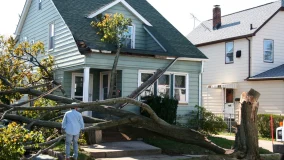Simplifying Coverage: How to Read Homeowners Insurance Policy Documents
Diving into the world of how to read homeowners insurance policy documents can sometimes feel like you’re in a maze. Why is it so difficult? Because it’s about protecting your most precious asset — your home. This complete guide aims to clarify the process, making it not just accessible but manageable, too.
Unlocking the Language of Home Insurance
Insurance has a long history, stretching back centuries, and its language might seem complex if you’re not around it daily. Home insurance, especially, involves a variety of terms to understand, from the basics of premiums, claims, and what is covered, to the different kinds of protection these policies offer.
The policy specifically comes in two parts: a declarations page and a policy jacket. But before we dive into the exact way your policy works, you should first understand how an insurance contract works in general. It’s the first step to understanding homeowners insurance policy terminology.
The Basics of an Insurance Contract
Imagine your homeowners insurance policy as a pact — a formal agreement ensuring your home’s safety net against unexpected events. This contract details the scope of protection offered, the things not covered (exclusions), and both your and the insurer’s duties. Isn’t it important, then, to grasp its basics? So, what is homeowners insurance?
Key Home Insurance Vocabulary Explained
- Premium: Essentially, it’s the price tag to keep your coverage active.
- Claim: Applying for financial help following a covered event.
- Peril: This term specifies the exact dangers your home is insured against, such as fire and theft.
Anatomy of a Home Insurance Policy
Imagine your home insurance policy as a sort of recipe book for keeping your home safe and sound. Each policy has a few key ingredients, and knowing what they are can help you understand what you’re getting into when it comes to understanding home insurance coverage.
D — Declaration Page Demystified
The declaration page is like the executive summary of your insurance plan. It highlights your policy’s who, what, and how much — providing a bird’s-eye view of your coverage. But why is it so important? Because it’s your go-to for the nitty-gritty details.
Coverage Essentials — From Dwelling to Liability
- Dwelling Coverage: This is the fortress safeguarding the very structure of your home.
- Personal Property Coverage: Look at this as a safety net for everything you own, wherever it may reside.
- Liability Coverage: Ever thought about what happens if someone gets hurt on your property? This coverage is your financial shield.
Policy Limits and Deductibles: Knowing Your Financial Responsibilities
- Policy Limit: The upper limit of your coverage — knowing this is critical. But how much is enough?
- Deductible: This is the portion you agree to pay out-of-pocket before your insurer steps in.
Reading the Fine Print
Now, how to read your home insurance policy? What does homeowners insurance cover?
Understanding Policy Exclusions
Every policy has its boundaries. Exclusions outline what’s not covered, which will help you understand where your coverage begins and ends.
Endorsements and Riders: Customizing Your Coverage
Customization is key. Endorsements or riders let you fine-tune your policy. Need extra coverage for that priceless painting or jewelry? Here’s where you add it.

Value Matters: Insuring Your Home Properly
Grasping the essentials of your homeowners insurance isn’t as complicated as it might seem. Diving into the basic elements of your policy and familiarizing yourself with the terminology can significantly clear up your policy questions.
It’s comforting to know that understanding a little more about how your insurance works makes securing your home’s safety seem much less overwhelming. Remember, your insurance agent is always ready to explain any confusing terms and tailor your coverage to fit your changing needs.
Replacement Cost vs. Actual Cash Value
- Replacement Cost: Covers rebuilding or replacement without depreciation.
- Actual Cash Value: This takes depreciation into account, offering a payout that reflects current value.
A good local agent can help you figure out what makes sense.
Extended and Guaranteed Replacement Cost Options
Imagine if rebuilding costs soar beyond your coverage limit. These options are your safety net, ensuring you’re not left short. But how do they differ, and which is right for you? It may take an extended visit with your neighborhood insurance agent o find the answer that works best for you.
Navigating Policy Conditions
Consider the conditions page as the rulebook for your insurance game. It lays out the mutual promises between you and your insurer. But why does it matter? It specifies your obligations and those of your insurer, impacting how claims are processed and disputes resolved. It’s important to understand your responsibilities so you are not caught with a denied claim.
The Conditions Page: Rules You Need to Know
Here lies the rulebook of your policy — outlining what’s expected of you and your insurer. It’s a bit like moving in together.
Duties After a Loss: What’s Expected of You?
Immediate notification and taking steps to prevent further damage are just the start. How well do you know your duties in the case of a loss? In short, you need to give your insurer a heads-up on what’s going on as soon as you have a clear idea. Consider the following steps after you incur a loss:
- Prompt Notification: Speed is of the essence. Informing your insurer quickly allows them to begin the claims process without delay. But how prompt is prompt enough? You should realistically aim to contact your insurer as soon as possible.
- Protecting Your Property: It’s not just about minimizing further damage; it’s a contractual obligation. Have you considered how to effectively safeguard your home post-incident? You’ll want to invest in measures that can reduce the chance of future losses.
- Documentation and Proof of Loss: Detailed records and evidence can be your best allies in supporting your claim. But what counts as enough documentation? Photographic evidence is great, as are other forms of visual proof.
- Cooperation During the Claims Process: From providing access to the damaged property to submitting to examinations under oath, your cooperation is crucial. You’ll need to work closely with your claims adjuster to get them the information they need.
- Compliance With Policy Conditions for Repairs: Many policies require you to get approval before starting significant repairs. Have you thought about what might happen if you do not follow this protocol? Talk to your agent if you’re not sure about these conditions.
Homeowners Insurance Made Simple
While these types of policies might seem complicated, our friendly, local, expert agents will help safeguard your living situation. Let the welcoming team at Acceptance Insurance assist you in building a policy and simplify home insurance in a way that makes the most sense for you.
We’ll support the entire process from start to finish by explaining your coverage needs and the types of products that help to insure against potential losses and will follow through with you if you need to file a claim. To get started, get a quote online, give us a call at (877) 405-7102, or visit your local Acceptance Insurance office today!



